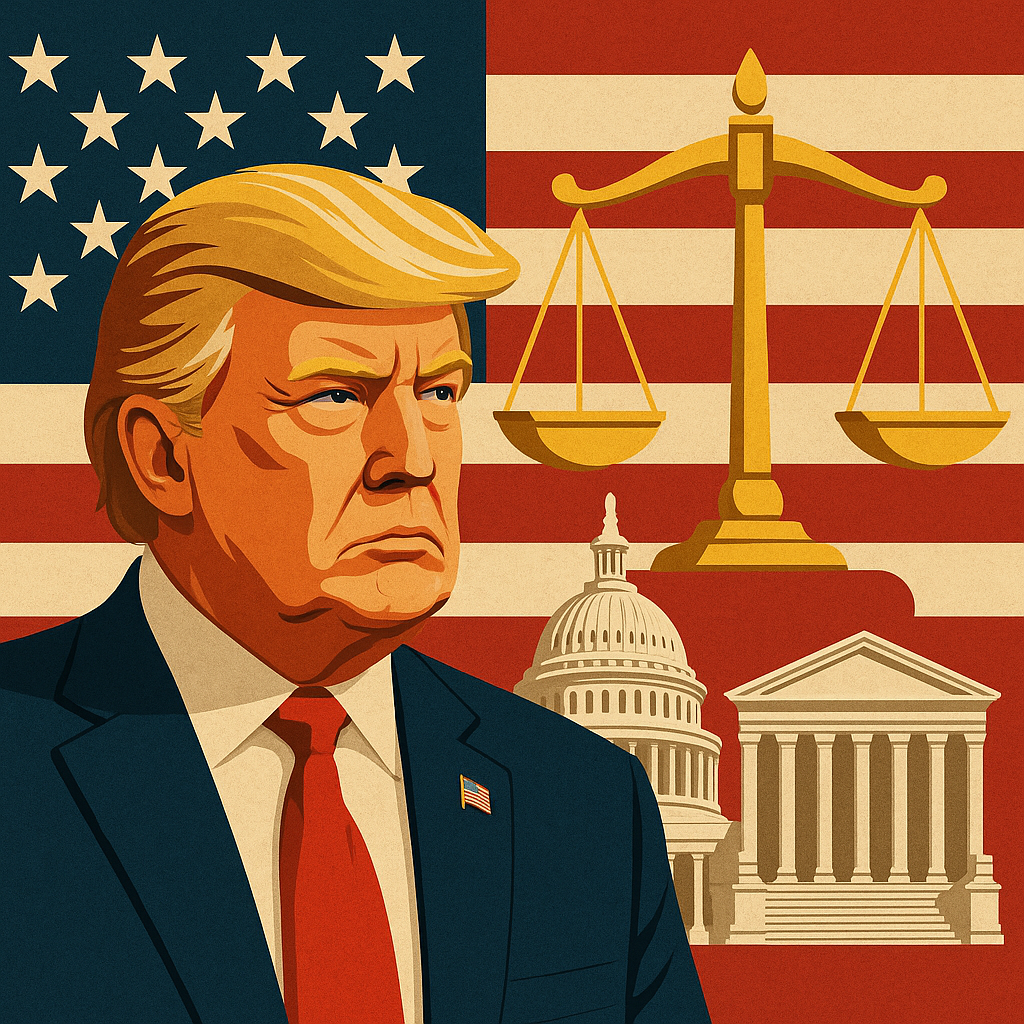🏛️ Political Shakeup with Market Implications
In a bold move that has sent ripples through Washington and Wall Street alike, former President Donald Trump unveiled a sweeping new tax reform proposal aimed at energizing the U.S. economy ahead of the 2025 election cycle. While the promise of aggressive corporate and individual tax cuts is likely to please investors and pro-business interests, one controversial clause has raised constitutional eyebrows: a provision that would curtail the authority of federal courts to block executive actions.
The proposed legislation, revealed Thursday, has already sparked sharp debate in legal and political circles. Markets responded cautiously, with the S&P 500 dipping 0.3% intraday amid uncertainty over how the bill might navigate Congress and the courts.
💼 Why This Matters for Investors
1. Pro-Growth Tax Cuts Could Lift Markets—Temporarily
The bill’s centerpiece is a broad reduction in corporate and individual tax rates, mirroring Trump’s 2017 Tax Cuts and Jobs Act. Early estimates suggest the legislation could lower the corporate tax rate from 21% to 17%, with individual rate reductions across most brackets. Proponents argue this could boost consumer spending, corporate profits, and capital investment—classic ingredients for a bull market.
“Tax relief at this scale could provide a short-term tailwind to GDP and earnings growth,” noted Keith Lerner, Chief Market Strategist at Truist Advisory Services, in comments to Bloomberg.
If passed, the sectors most likely to benefit include financials, consumer discretionary, industrials, and tech, all of which stand to gain from lower tax burdens and increased domestic spending.
2. Judiciary-Limiting Provision Raises Legal and Political Risk
Tucked within the legislation, however, is a provision to restrict federal courts’ ability to issue nationwide injunctions on executive actions—a move widely seen as an attempt to shield future policy moves from judicial review. Critics say this threatens the separation of powers and could spark significant constitutional challenges.
“Such a provision undermines legal checks and balances. It would face immediate legal challenges and may never survive scrutiny,” said constitutional law professor Jessica Levinson on U.S. News & World Report.
From an investment standpoint, this clause introduces political and legal uncertainty that could weigh on market sentiment. Uncertainty around the bill’s constitutionality, combined with a potentially protracted court battle, may rattle investor confidence, particularly in sectors sensitive to regulation and executive oversight such as healthcare, energy, and big tech.
📊 Key Market and Sector Impacts
| Sector | Potential Upside | Potential Risk |
|---|---|---|
| Financials | Tax cuts may boost profits and lending | Legal volatility could unsettle markets |
| Consumer Discretionary | Increased disposable income boosts demand | Inflation risks if deficits widen |
| Healthcare | Mixed impact: tax benefit but sensitive to regulation | Susceptible to judicial oversight debates |
| Big Tech | Gains from tax relief | Risks from governance and regulatory uncertainty |
📉 What to Watch Next
- Congressional Response: Moderate Republicans and Democrats are likely to challenge the court-limiting clause. Investors should watch for signs of bipartisan support or resistance, which could shape the bill’s survival.
- Judicial Challenges: Any attempt to pass the bill as written would almost certainly trigger lawsuits. Markets may become volatile if legal clarity is lacking.
- Federal Reserve Reaction: While tax cuts could fuel growth, the Fed may have to reconsider its rate path if fiscal stimulus stokes inflation.
💡 Key Investment Insight
While Trump’s tax proposal presents upside potential for earnings and growth, investors should prepare for a period of heightened political and constitutional volatility. Focus on companies with strong U.S. revenue exposure and low regulatory risk. Defensive sectors like utilities and infrastructure may also provide a hedge against potential policy whiplash.
Long-term investors may consider dollar-cost averaging into positions while keeping powder dry for potential pullbacks driven by political uncertainty.
✅ Stay Informed with MoneyNews.Today
The intersection of politics and investing is more relevant than ever. As campaign season heats up and fiscal policy takes center stage, count on MoneyNews.Today for timely, trusted coverage and market-smart insights.





